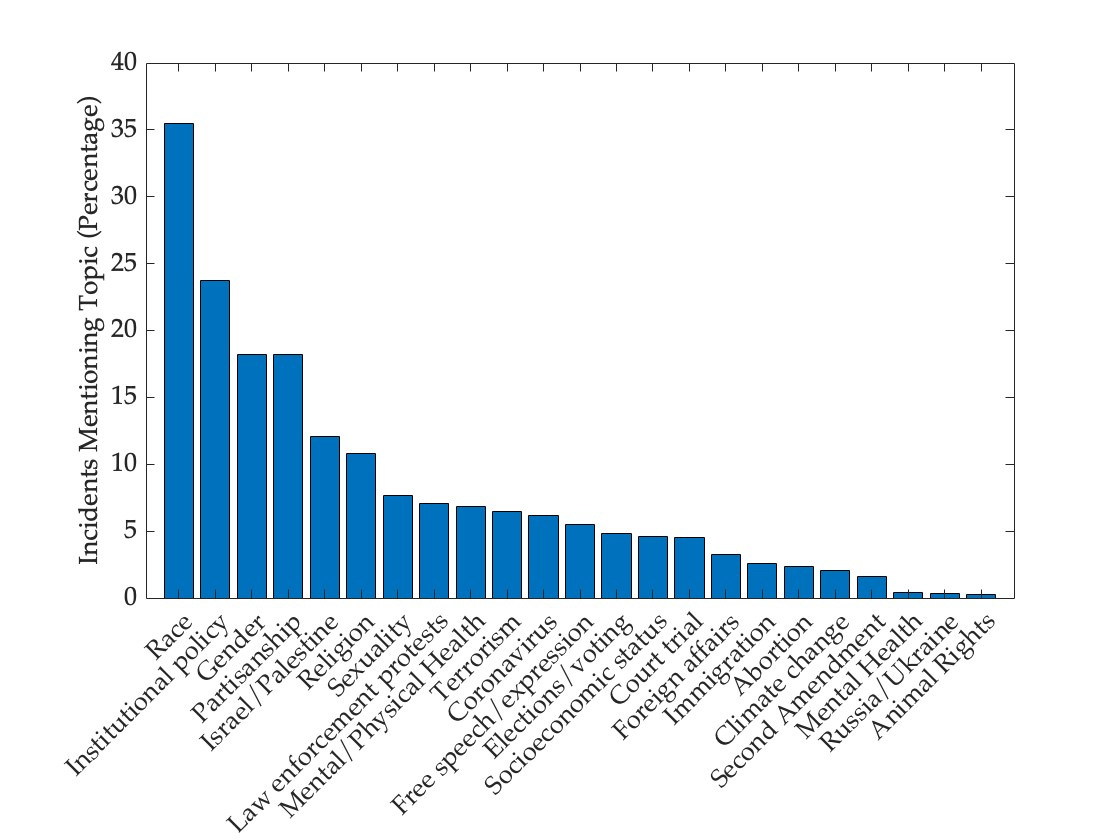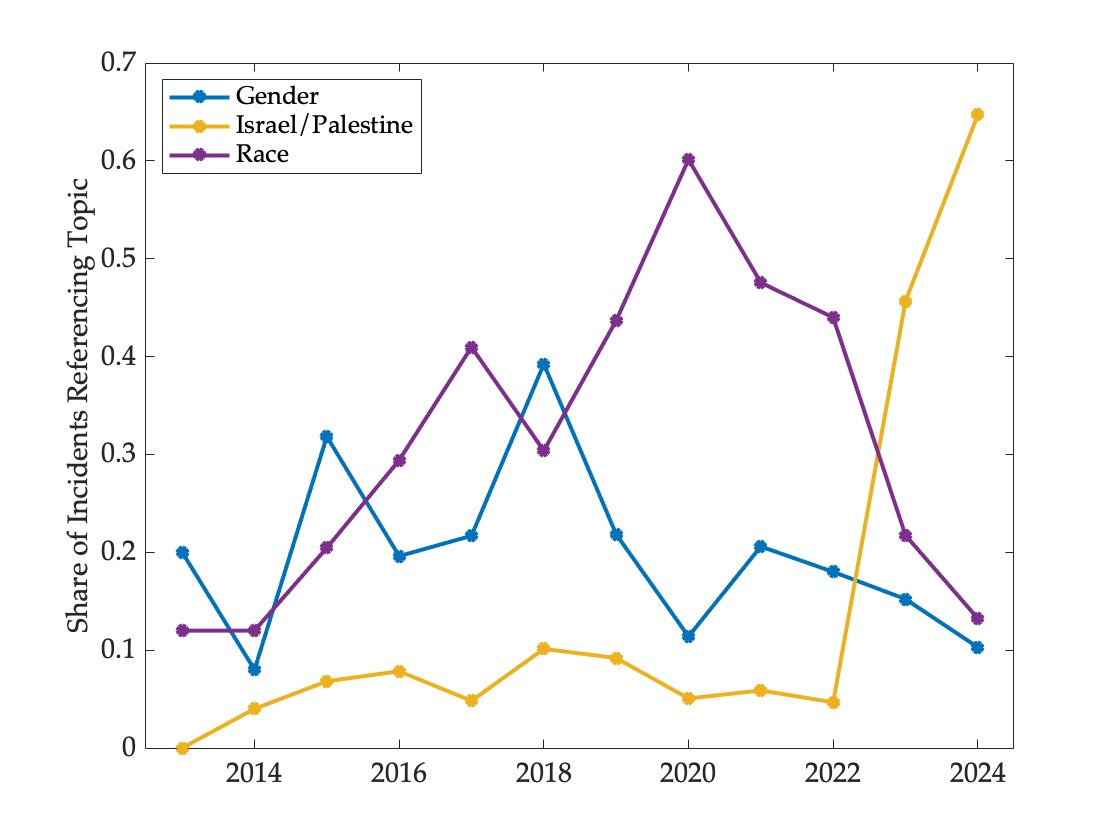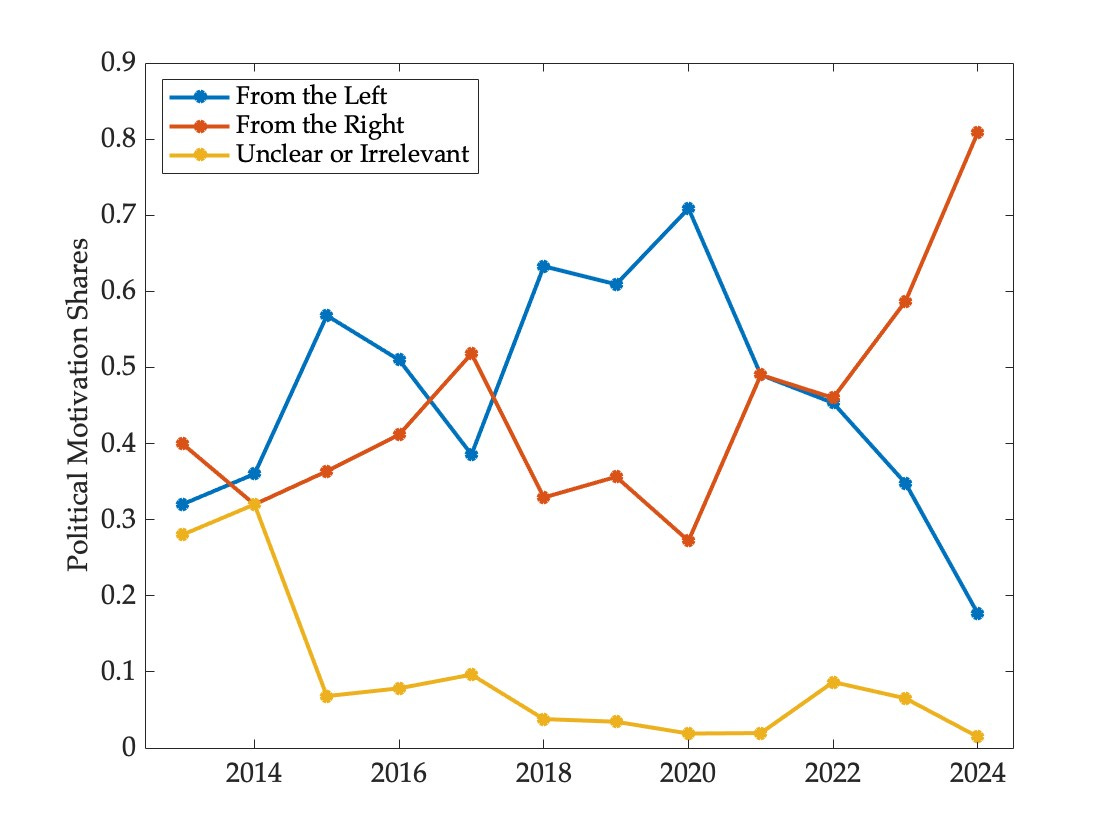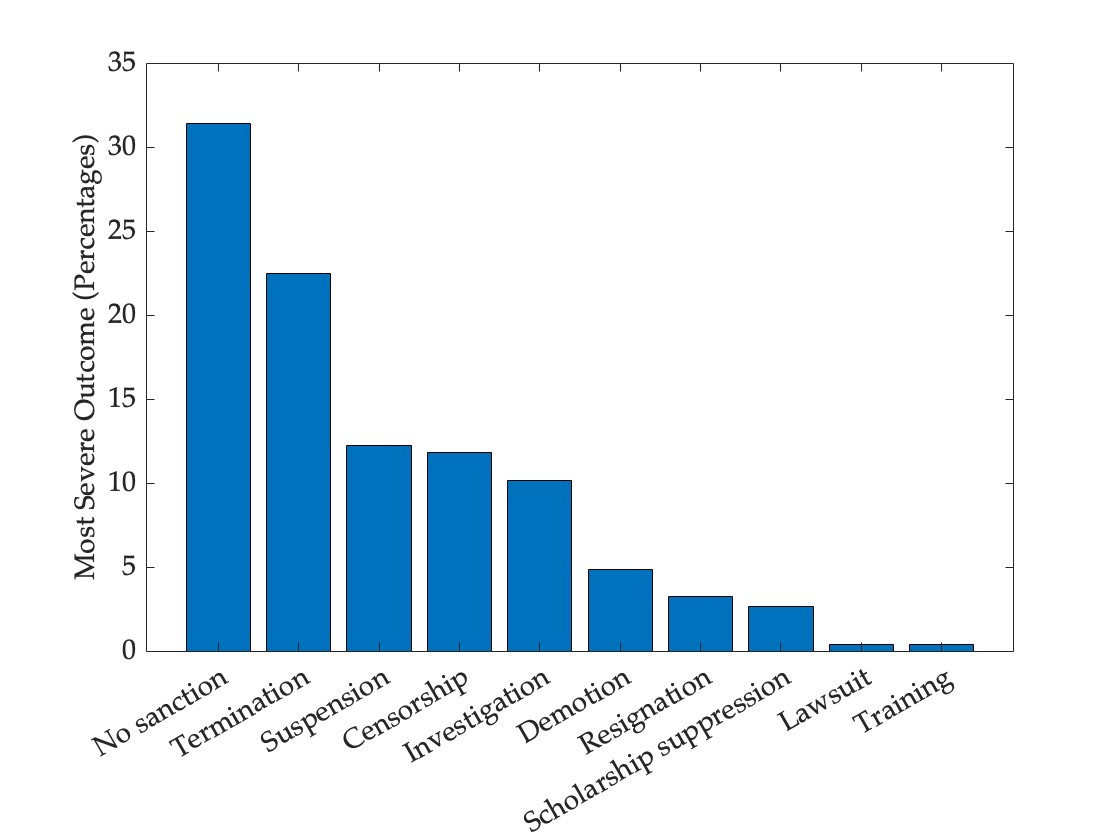Yves here. Rajiv Sethi reviews the data on efforts to curb the speech of academics, including the political leanings of the opponents and the degree of success of the attack. His overview shows that these campaigns against scholars come in waves, and their overall frequency has risen.
By Rajiv Sethi, professor of economics at Barnard College. Originally published at his website
The Foundation for Individual Rights and Expression (FIRE) has been tracking calls for sanction faced by scholars in American higher education, and tabulating these in their Scholars Under Fire database. The effort began in 2015, but coverage includes incidents dating back to 2000. I’ve spend some time over the past few days examining this data, and there are some striking patterns to be seen.1
FIRE defines a targeting incident as “a campus controversy involving efforts to investigate, penalize or otherwise professionally sanction a scholar for engaging in constitutionally protected forms of speech.” Each incident is categorized based on multiple attributes, including the topics addressed in the speech, the political direction from which the targeting arose, and the sanctions (if any) that were imposed on the speaker.
As an example, consider the entry for an incident at Hamline University that I have previously discussed at length. The scholar in this case was the art historian Erika López Prater, who displayed the image of a 14th century painting depicting the Prophet Muhammad receiving his first Quranic revelation from the Angel Gabriel. Although the painting is considered by many to be a masterpiece of Islamic art, López Prater understood that some students may want to avoid seeing it on religious grounds, and provided a number of written and verbal content warnings. Despite this, a complaint was filed and her contract was not renewed. The database entry for this incident codes the topic as religion, the complaint as coming from the left, and the outcome as investigation, termination.
There is also an entry for Mark Berkson, chair of the Hamline religion department, who wrote an article defending his colleague. This was published in the student newspaper but then scrubbed from the website. The outcome in this case is coded as censorship.2
There are 1242 incidents involving 1166 scholars over the period 2000-2024 in the database. More than fifty individuals appear multiple times, led by Amy Wax with seven separate entries. She was targeted from the left, as were Dorian Abbot, Jay Bhattacharya, Nicholas Christakis, Amy Chua, Alice Goffman, John Mearsheimer, Stuart Reges, Larry Summers, Robert George, Peter Singer, and Eugene Volokh. Those targeted from the right include Noam Chomsky, Kimberlé Crenshaw, Sandy Darity, Richard Delgado, Norman Finkelstein, Katherine Franke, Rashid Khalidi, and Chanda Prescod-Weinstein.3 Michael Bailey and Erwin Chemerinsky have been targeted from both left and right in separate incidents, while Alice Dreger has been targeted from a direction coded as unclear/irrelevant. These are just a few examples—the database is searchable and you can look up anyone who comes to mind.
There are a number of interesting patterns in the data.
Even if one allows for the fact that earlier years may have less comprehensive coverage, it seems clear that the frequency of targeting peaked in 2021 and was especially high over the 2020-2022 period:

Scholars have faced sanction for twenty-three distinct speech topics, and many incidents span multiple topics. The following figure shows the frequency with which each topic is mentioned, as a percentage of total mentions:

Institutional policy is a bit of a catch-all category encompassing speech acts related to rules and procedures, and is less coherent than the other topics. Disregarding this, there are three topics that appear with especially high frequency, responsible for more than one-third of total mentions in at least one year. The annual prevalence of these since 2013 may be seen in the following figure.

There are two striking patterns here—the very high prevalence of race as a topic over the period 2019—2022, and the dramatic increase in the prevalence of Israel/Palestine as a topic during the last two complete years in the data.
Alongside the shifting composition of topic prevalence is a change in the direction from which targeting occurs. Attacks came mostly from the left over the 2018-2020 period, were then at parity for a couple of years, and more recently have come mostly from the right:

Now consider the consequences of being targeted. A call for sanction can be ignored by the scholar’s home institution, of course, and this happens in about one-third of cases. A further one-tenth involve an investigation but no further penalty. The remaining incidents result in sanctions of varying severity, ranging from training and censorship to suspension and termination. In many cases, multiple sanctions are applied. The following figure shows the frequencies of the most severe sanction applied in each of the incidents.5

About forty percent of incidents result in demotion, suspension, or termination.
Finally, consider how the direction from which the complaint arrives and the likelihood of any sanction more severe than an investigation varies across the most prevalent topics:6

When it comes to speech that references race and gender, targeting is more likely to come from the left, and is more likely than not to result in a serious sanction. The opposite is true for speech referencing Israel/Palestine. In this case the targeting is overwhelmingly from the right, and the likelihood of sanction is below one-half.
What broader lessons can one can draw from all this?
To begin with, the data helps us understand why self-censorship on campuses is so prevalent. According to FIRE’s 2024 faculty survey, about a quarter of respondents are extremely guarded in conversations with colleagues and students, due to “fear of social, professional, legal, or violent consequences.” And the issue on which self-censorship is exercised with greatest frequency is indeed Israel/Palestine.
Second, there was a period of several years during which constitutionally protected speech referencing race and gender was targeted frequently and sanctioned often. This reflects a rising censoriousness on the left that was discussed and lamented by Katha Pollitt back in 2021, when it was at its peak.7 The intensity of censorship appears to have subsided, but this history does leave colleges and universities vulnerable to a charge of hypocrisy when it comes to freedom of expression. The perception that they are now embracing principles that were previously honored in the breach is not without foundation.
Assaults on the independence of universities are now arriving with unprecedented frequency and ferocity. To defend against these, lawsuits alone will not suffice. Public confidence in higher education has declined precipitously across partisan lines, and this has to be recognized and addressed.8 And rebuilding trust will require, at a minimum, some acknowledgement of failures to vigorously protect free expression in the past.9
The stakes could not be higher. We have a dense and intricate ecosystem of institutions, anchored by research universities and liberal arts colleges, that currently provides services and opportunities for which there is enormous global demand. The benefits provided by this system to our economy in general, and our balance of trade in particular, are enormous. But if American universities lose their independence, they will also lose a good portion of their faculty. They will be substantially and perhaps irreversibly diminshed.
Meanwhile, other countries are ready to pounce. A couple of weeks ago I suggestedthat ten percent of Norway’s massive sovereign wealth fund would be enough to seed a dozen new universities across Scandinavia, each with an endowment matching that of Columbia today. This prospect might once have sounded fanciful, but is becoming more plausible by the day. So far it’s just researchers who are being pursued, but if our elaborate model of undergraduate education and graduate student training is replicated elsewhere, students and aspiring scholars will follow in droves. And at that point the undisputed global dominace that American universities have enjoyed for decades will be lost for good.
I’m grateful to Sean Stevens and Komi Frey at FIRE for sharing the raw data with me and for helping me understand it better.
Mark was the inaugural recipient of the Berkson Courageous Colleague Award presented annually by FIRE.
Targeting from the right often comes from entities set up for the purpose. For example, 92 incidents (almost 17 percent of the 546 cases involving targeting from the right) are attributed to listings on Professor Watchlist, published online by Turning Point USA.
I have focused here on incidents since 2013, since this encompasses three complete presidential terms, and coverage for earlier periods is less reliable.
Here I have used the following ranking of severity, from most to least severe: termination, suspension, demotion, scholarship suppression, censorship, retraction, resignation, training, investigation, lawsuit (usually filed by the targeted scholar), and no sanction. So, for example, the case of López Prater has termination rather than investigation as the most severe outcome.
The numbers in the political direction columns don’t add up to a hundred percent in the case of gender because the direction is listed as unclear/irrelevant in six percent of cases.
I had the pleasure of hearing Pollitt discuss these issues in person just yesterday, at a meeting of the Columbia Academic Freedom Council. The speakers hosted by this organization at its monthly dinners have been extraordinary, with Randall Kennedy, Carole Hooven, Steven Pinker, and Nadine Strossen among them.
Yale has established a faculty-led committee to do precisely this.
It will require much more, of course. I have previously mentioned institutional neutrality, admissions transparency, and the systematic tracking of life outcomes to ensure that selection and curriculum are mission-aligned.

